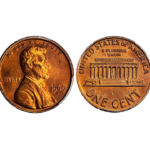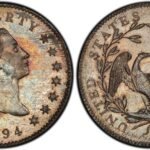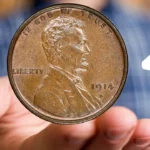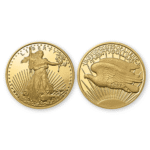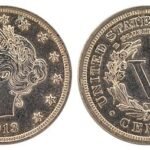
There’s something special about the humble Lincoln Wheat Penny — that little copper coin that jingled in pockets during world wars, the Great Depression, and America’s golden decades. To be fair, most people glance at a penny and think, “It’s just one cent.” But collectors? They see history, rarity, and in some cases — serious money.
The Wheat Penny (or “Wheatie,” as many collectors affectionately call it) is more than just change. It’s a miniature time capsule from 1909 to 1958 — a coin that tells stories of Abraham Lincoln’s legacy, the U.S. Mint’s craftsmanship, and the country’s shifting times. So, let’s take a journey — a full decade-by-decade dream guide — to understand why these coins are so loved, what makes them valuable, and which ones could make you a fortune.
A Brief Look Back — Where It All Began
The Lincoln Wheat Penny first appeared in 1909, designed by Victor David Brenner to commemorate Abraham Lincoln’s 100th birthday. It was revolutionary — the first U.S. coin to feature a real person’s portrait. The reverse side carried two wheat stalks framing the words “ONE CENT.”
Simple, symbolic, and elegant.
Now, the magic lies in the details — mint marks, years, and small design variations. Over time, some coins became incredibly rare due to minting errors or low production runs, and that’s where the excitement begins.
The 1910s – The Foundation of Rarity
If you’ve got pennies from the 1910s, pay attention. This was when it all started, and several are now collector favorites.
The 1909-S VDB Lincoln Cent is one of the most famous. The “VDB” refers to the designer’s initials, which were placed on the back — something the public criticized back then. The Mint quickly removed it, making the San Francisco version extremely rare. Today, one can sell for $2,000 to $10,000, depending on condition.
Other stars of this era?
- 1914-D Lincoln Wheat Penny — scarce and highly sought-after.
- 1917 Double Die Obverse — a minting error that makes collectors’ hearts race.
The 1920s – Scarcity Takes Over
By the 1920s, mintages fluctuated wildly, and many pennies from smaller mints didn’t survive in good shape.
The 1922 No D Wheat Penny, for example, is a famous error coin. It was minted in Denver (“D”), but due to worn dies, some coins came out without the mint mark. That little mistake made it a numismatic gem, often selling for $1,000–$15,000 today.
Other notable finds include the 1924-D and 1926-S, both challenging to locate in mint condition.
The 1930s – Depression-Era Rarities
The Great Depression didn’t just affect people — it affected pennies too. Production dropped sharply.
The 1931-S Lincoln Wheat Penny is one standout, with just 866,000 minted — one of the lowest of the series. Even in average condition, it can fetch $100–$200, while pristine examples go for much more.
Also, keep an eye out for the 1936 Double Die — one of those fascinating errors where the date or lettering appears doubled.
The 1940s – War Changes Everything
World War II brought material shortages, and in 1943, the U.S. Mint switched from copper to zinc-coated steel. These “steel cents” are iconic — shiny gray coins that looked more like nickels than pennies.
However, a few 1943 copper blanks were mistakenly used. Those rare 1943 Bronze Wheat Pennies have sold for over $1.7 million. Yes, that’s right — a one-cent coin worth a mansion.
Also valuable are the 1944 Steel Pennies — made from leftover steel planchets. Only a handful exist, and they’re worth tens of thousands.
The 1950s – The Final Years of the Wheaties
The last Lincoln Wheat Penny was struck in 1958, closing a legendary chapter. While most from this decade are common, condition and mint marks still matter.
Look for:
- 1955 Double Die Obverse — one of the most famous error coins in U.S. history. You can clearly see doubled letters in “LIBERTY” and “IN GOD WE TRUST.” It can fetch $5,000–$100,000+ depending on grade.
- 1958 Double Die — extremely rare and valuable, worth tens of thousands.
Dream Value Table – Lincoln Wheat Pennies to Watch
| No. | Coin | Year | Mint Mark | Estimated Value (USD) | Notable Feature |
|---|---|---|---|---|---|
| 1 | 1909-S VDB | 1909 | S | $2,000 – $10,000 | First issue with initials |
| 2 | 1914-D | 1914 | D | $500 – $5,000 | Scarce mint mark |
| 3 | 1922 No D | 1922 | — | $1,000 – $15,000 | Missing mint mark |
| 4 | 1931-S | 1931 | S | $100 – $600 | Low mintage |
| 5 | 1943 Bronze | 1943 | Varies | $100,000 – $1.7 million | Copper error coin |
| 6 | 1944 Steel | 1944 | Varies | $40,000 – $100,000 | Wrong metal used |
| 7 | 1955 Double Die | 1955 | — | $5,000 – $100,000+ | Doubled lettering |
| 8 | 1958 Double Die | 1958 | — | $20,000 – $200,000 | Ultra-rare variation |
Tips for Collectors (or Dreamers)
If you’re thinking of checking your old jars of pennies — do it!
Here’s what to remember:
- Condition is king. Coins with less wear fetch much higher prices.
- Mint marks matter. Always check for “D” (Denver) or “S” (San Francisco) under the date.
- Errors equal excitement. Double dies, missing letters, or wrong materials are golden signs.
Even if you never find a million-dollar piece, collecting Wheat Pennies is still deeply rewarding. Each coin connects you to a slice of American history — simple, honest, and enduring.
Honestly, the Lincoln Wheat Penny might be the most beloved coin in American numismatics. It’s accessible, meaningful, and sometimes shockingly valuable. Whether you’re a seasoned collector or just curious, these little copper circles hold far more than one cent’s worth of history.
So next time you come across an old penny, don’t dismiss it. That dull brown coin might just be your ticket to a collector’s dream.
Frequently Asked Questions (FAQ)
1. Why are some Wheat Pennies so valuable?
Because of low mintages, historical significance, and minting errors. The rarer the combination, the higher the price.
2. What is the rarest Lincoln Wheat Penny?
The 1943 Bronze Wheat Penny is often considered the rarest and most valuable — one sold for over $1.7 million.
3. How can I tell if I have a double die Wheat Penny?
Look closely at the date and lettering. If the numbers or words appear doubled or blurry, it might be one.
4. Are steel pennies from 1943 worth much?
Common ones aren’t — usually just a few dollars. But copper versions from 1943 are worth a fortune.
5. How should I store Wheat Pennies?
Use acid-free holders or coin flips, and avoid cleaning them — that can actually lower their value.
